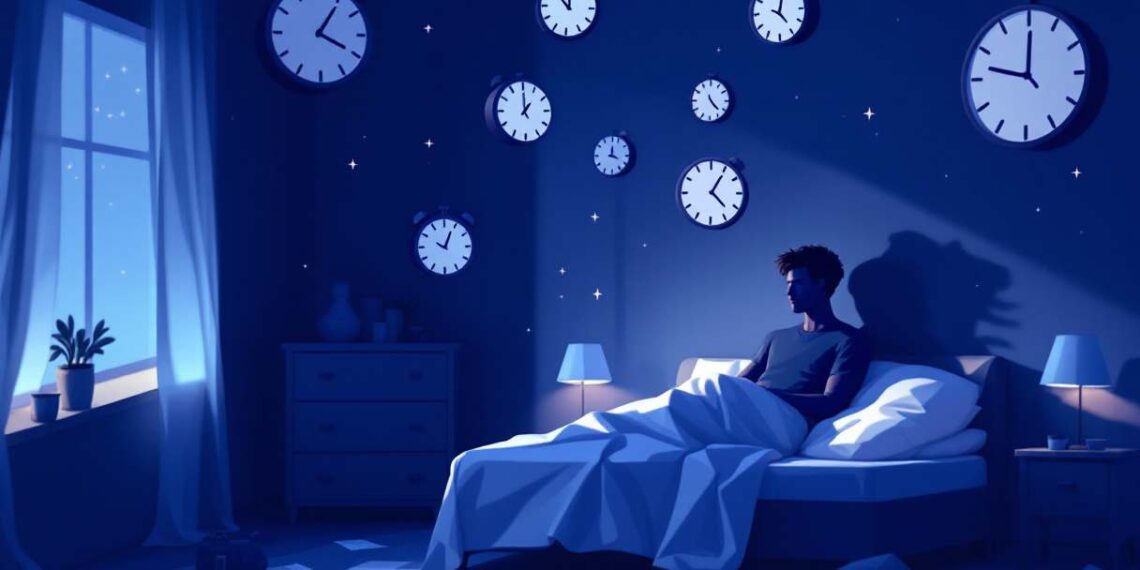Ever found yourself staring at the ceiling at 3 AM, watching the minutes tick by while sleep remains frustratingly out of reach? You’re not alone in this midnight struggle. Insomnia, that notorious thief of peaceful nights, affects millions of people worldwide, turning what should be restful hours into an exhausting battle with consciousness.
Whether you’re a chronic sufferer watching infomercials until dawn or someone going through a rough patch of sleepless nights, understanding this common sleep disorder could be your first step toward reclaiming your nights. Let’s demystify insomnia and explore the paths back to peaceful slumber.
Understanding Insomnia
Insomnia keeps plenty of folks peering at the ceiling, pondering why sleepy time just won’t come. This piece dives into what insomnia actually is and what might be causing all those sleepless nights.
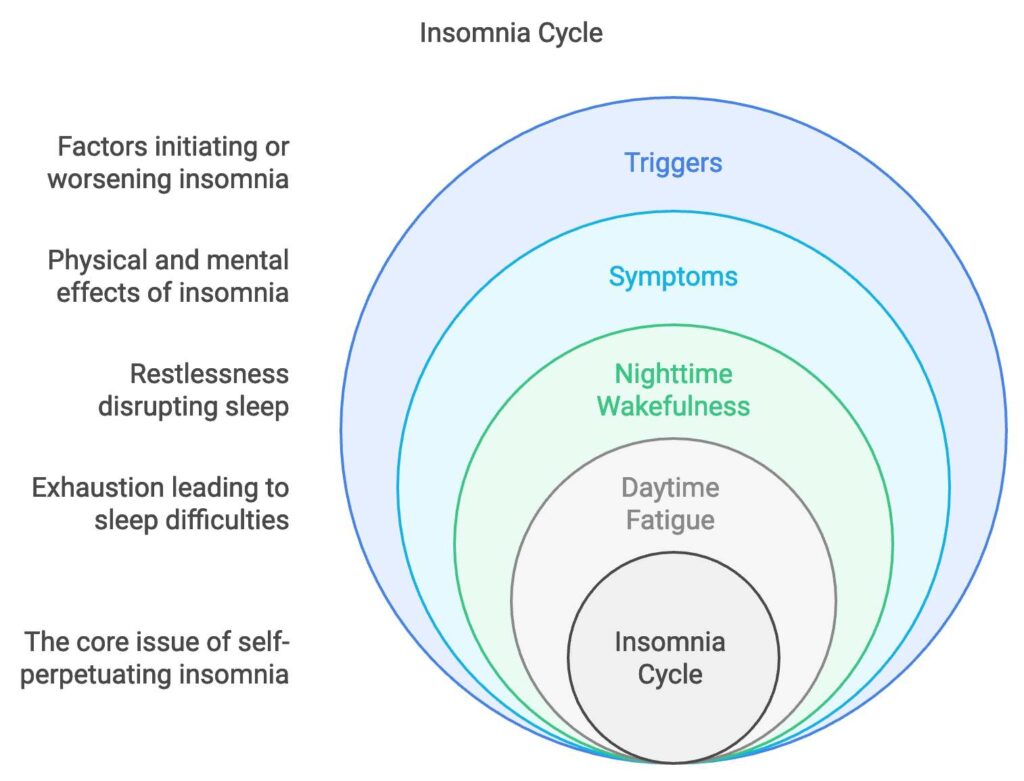
What is Insomnia?
Insomnia means struggling to catch those Z’s on the regular, leading to feeling like a groggy zombie during the day. There’s the short-term kind, where it sticks around just for a little while, and the stubborn kind that lingers on for at least a few months, three times a week or more. It’s not just about being tired – it can also mess with your mood, mess with your head, and mess with life in general.
Let’s break it down with some hangups insomnia folks might notice:
| Symptom | Description |
|---|---|
| Trouble nodding off | Can’t seem to fall asleep even when you’re dog-tired |
| Nighttime wake-ups | Keep waking up again and again through the night |
| Rising too early | Up with the birds, can’t get back to sleep |
| Sleep that doesn’t refresh | Waking up thinking you haven’t slept a wink |
| Daytime drowsiness | Feeling wiped out and sleepy all day long |
If you’re asking yourself, “why can’t I fall asleep?” maybe knowing a bit about insomnia will shine some light.
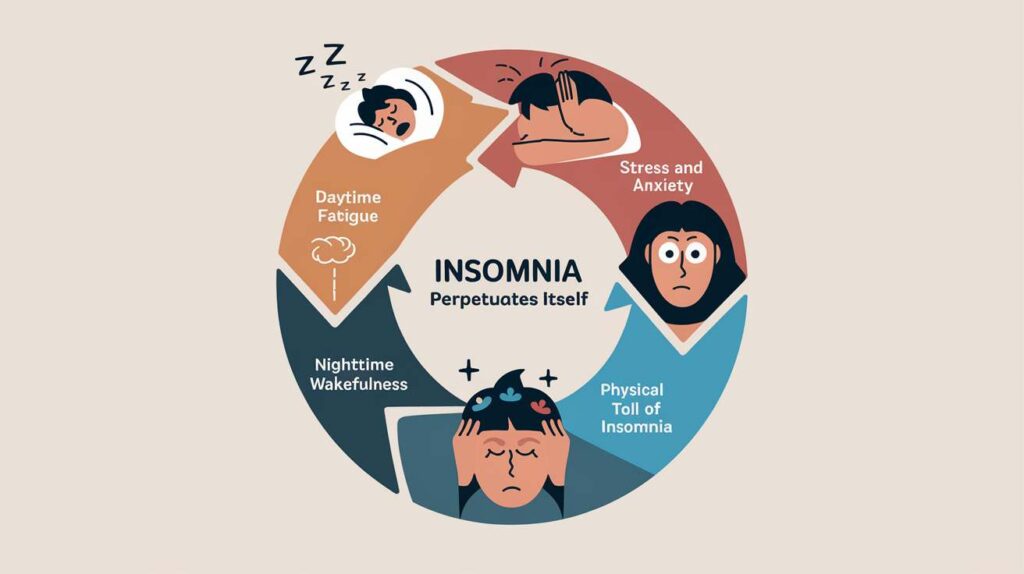
Common Causes of Insomnia
So, what’s causing all this? Insomnia can spring from all kinds of things – some in the mind, some in the body, and some just from everyday living. Here’s a look at a few usual suspects:
| Cause | Description |
|---|---|
| Stress and Anxiety | Can’t switch off your brain over work, love life, or big changes? Hello, sleep trouble. Find out more in Insomnia vs anxiety. |
| Depression | Feeling down or just plain blah can mess with shuteye time. Check out depression and insomnia for more. |
| Health Issues | Stuff like asthma, arthritis, or diabetes might get in the way of snoozing. |
| Pills and Prescriptions | Some meds just have that pesky side effect of keeping you up. |
| Bad Habits | Junk sleep practices, erratic sleep schedules, or binging Netflix before hitting the sack can keep you awake. See our sleep hygiene checklist for tips. |
| Hormonal Shifts | Stuff like pregnancy or menopause can throw sleep into chaos. New moms and dads might wanna check out pregnancy insomnia remedies. |
Figuring out what’s causing the insomnia can be a game-changer. If you’re also curious about how long this no-sleep thing might drag on, don’t miss our insights on how long insomnia lasts. Knowing what’s up can guide you to potential solutions like trying out some exercise for insomnia or finding Zen with meditation for sleep.
Introducing CBT-I
What is CBT-I?
Cognitive Behavioral Therapy for Insomnia (CBT-I) is a lifeline for folks having a tough time catching those Zs. It’s all about getting to the root of sleep troubles by tackling the thoughts and habits that mess with a good night’s rest. Loved by insomniacs, frazzled new parents, and those working the graveyard shift, CBT-I teaches handy tricks to make sleep better, no pills required. Let’s just say it tries to soften that restless night beast by flipping the script on pesky sleep-stealing beliefs. Many see it as the go-to fix without having to raid the medicine cabinet.
How CBT-I Works
CBT-I isn’t just about telling you to hit the hay at a certain hour. Nah, it’s more about clearing the jumble of thoughts, feelings, and habits keeping you up. Here’s how it rolls:
| What’s Involved | What It Does |
|---|---|
| Rethinking Sleep | Helps boot those gloomy sleep notions and ushers in a fresh, sunnier outlook on snooze time. |
| Sleep Time Tweak | It shaves down bed hours to pack sleep tighter and rev up that sleepy feeling. Got questions on this? Check out our piece on sleep restriction therapy. |
| Bedtime Boundaries | Links the bed with sleep alone, ditching distractions like TV binging or scrolling socials under the covers. |
| Chill Methods | Uses chill-out tactics like meditation or deep breaths to ease tension and ward off pre-sleep jitters. Need more ideas? Peep our guides on meditation for sleep and exercise for insomnia. |
With these tools in hand, CBT-I helps folks outsmart that insomnia cycle. It kits them out with the right stuff to take on their sleep demons. For anyone scratching their heads over why shut-eye seems impossible, CBT-I could be their ticket to dreamland and a boost to how awesome they feel when awake.
Research on CBT-I
Cognitive Behavioral Therapy for Insomnia, or CBT-I, is making some noise for its knack in tackling the different shades of insomnia. Tons of studies shine a light on its perks and success stories, leaving skeptics asking, “does CBT-I really get the job done?”
Studies Supporting CBT-I
There’s a mountain of research showing CBT-I can seriously boost sleep quality for many folks. Clinical trials and other big-picture analyses often show this therapy outshines the old-school sleep meds. Here’s some cool stuff from the latest studies:
| Study | Participants | Sleep Quality Boost | Quicker Snooze Time |
|---|---|---|---|
| Controlled Trial (2015) | 80 Folks with Chronic Insomnia | 70% slept better | 30% quicker to nod off |
| Big Picture on CBT-I (2020) | Over 800 Folks | Big-time improvement | Lost 20 mins of tossing and turning |
| Helping New Parents (2021) | 60 New Parents | 65% got more shut-eye | 25% fewer night disruptions |
All these findings say CBT-I helps all kinds, from chronic insomniacs to sleep-deprived new parents.
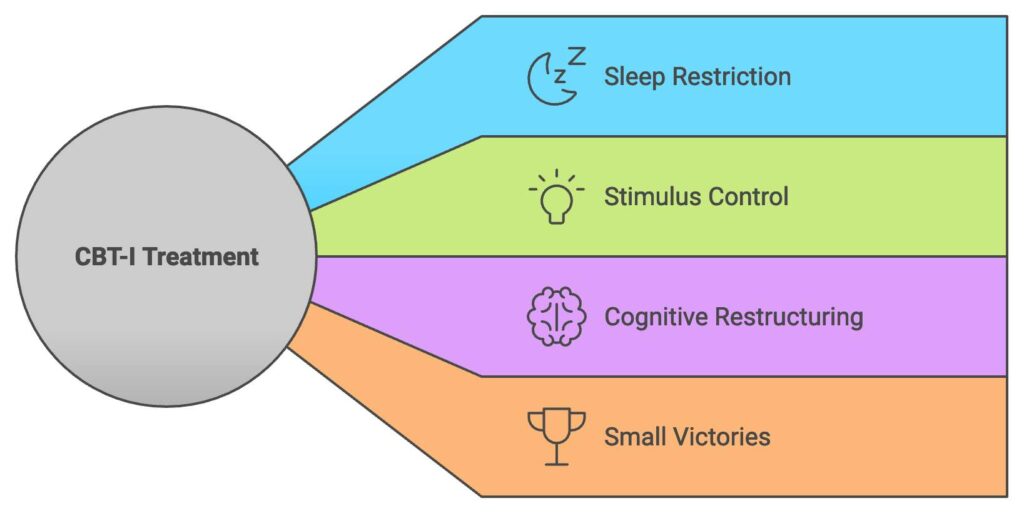
Success Rates of CBT-I
The success rates of CBT-I can be different, depending on the person’s situation and how well they stick to the plan. The science shows a solid chunk of people see real, lasting changes in their sleep routines. Here’s the lowdown on success rates from a bunch of studies:
| Study | Sleep Improvement Success | Keeping it Going (6+ Months) |
|---|---|---|
| Therapy vs. Pills (2019) | 60% saw a change | Half kept snoozing better after 6 months |
| Long Haul Check-In (2021) | 75% were happy | 55% still sleeping well |
| Fit for Night Owls (2022) | 70% gave a thumbs up | 45% kept their z’s for a while |
These numbers show CBT-I doesn’t just help at first; it often keeps the good sleep juices flowing, making it a go-to for many insomnia cases. For anyone open to this path, knowing it’s backed by evidence can ease their mind in the hunt for better sleep. Curious cats can also hop over to our article on why can’t I fall asleep for more snooze mysteries.
Who Can Benefit from CBT-I
Cognitive Behavioral Therapy for Insomnia (CBT-I) is a life-saver for folks battling sleep woes. Plenty of different people can catch a break with this therapy.
Chronic Insomnia Sufferers
People wrestling with long-term insomnia are often trapped in a sleepless cycle. CBT-I tackles the habits and thoughts that feed this loop, giving you tools to escape. Studies back up that CBT-I ramps up sleep quality and cuts down those annoying wake-ups at night.
New Parents Experiencing Sleep Disruption
New parents don’t get much shut-eye thanks to their baby’s round-the-clock needs. CBT-I dishes out tips to help moms and dads juggle their sleep schedules better. Even with all that baby chaos, getting a bit more sleep is doable with some smart routines and understanding sleep pressure.
| Group | CBT-I Benefits |
|---|---|
| Chronic Insomnia Sufferers | Feel more rested, fewer midnight wake-ups |
| New Parents | Sleep schedule juggling, improved rest despite baby blips |
Shift Workers with Irregular Sleep Patterns
Those who work shifts might find their sleep all over the place because of changing hours. CBT-I can help them stick to a sleep plan and handle sleep pressure well. With these tricks, adapting to shifting work hours ain’t so tough, and sleep quality goes up a notch.
Anxiety/Stress-related Insomnia Cases
Stress and anxiety-related insomnia can mess with your head and body big time. CBT-I focuses on the thinking and actions that make anxiety worse. By spotting and changing these habits, folks can sleep healthier.
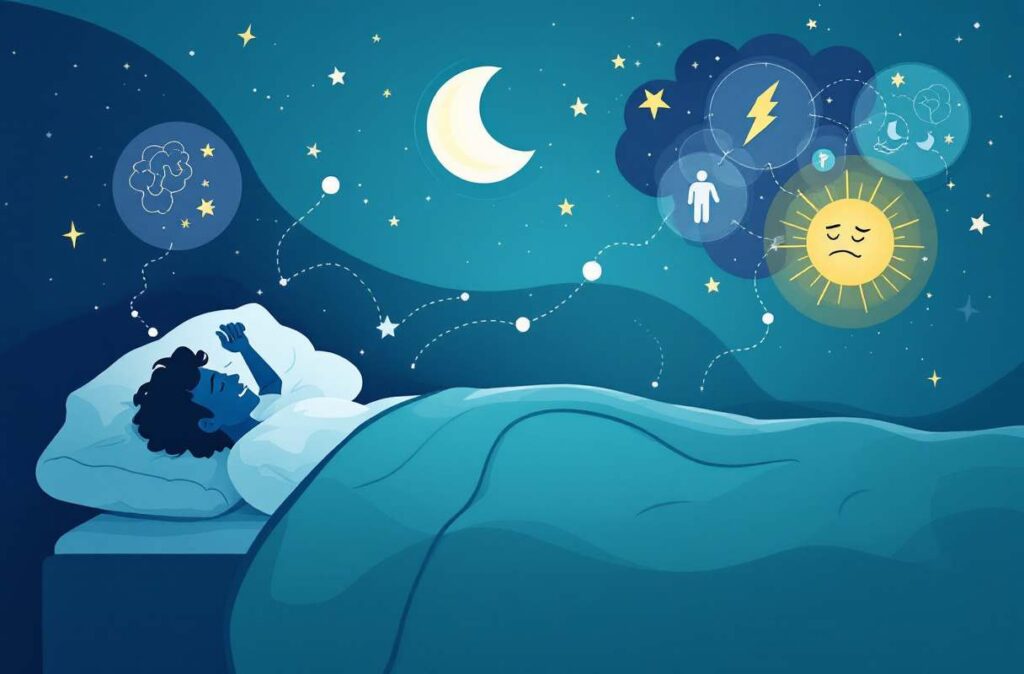
- If you’re dealing with anxiety-induced sleeplessness, check out our insights into insomnia vs anxiety.
Older Adults with Age-related Sleep Changes
As people age, sleep habits tend to get funky. CBT-I helps them figure out what their body needs and pushes them toward better sleep habits. Want more tips? Peek at our sleep hygiene checklist.
People Taking Medications Affecting Sleep
Some meds can mess up your sleep. CBT-I gives folks the tools to handle these issues by teaching handy tricks to fight their meds’ effects. Chatting with your doc ensures CBT-I suits your needs in this situation.
Knowing who thrives with CBT-I shows it’s not just a one-size-fits-all deal. Folks facing sleep hurdles have a shot at better nights with the right strategy. For more ways to beat insomnia, explore our pieces on sleep restriction therapy and exercise for insomnia.
Components of CBT-I
Cognitive Behavioral Therapy for Insomnia (CBT-I) is like a toolbox, packed with different strategies to tackle those pesky thoughts and habits that mess with your sleep. These methods guide folks to build better sleep routines and boost their overall snooze quality.
“CBT-I is not just about sleeping better; it’s about breaking the cycle of insomnia and reclaiming control over your rest.” – Dr. Charles Morin
Sleep Restriction
Imagine cutting back on the time you spend lying in bed, awake and restless. That’s sleep restriction. This strategy is about making the most of the time you’re actually asleep, which can help you sleep more soundly. It starts with only being in bed for the same number of hours you’re usually asleep. As you start to nod off more easily, you can gradually spend more time under the covers.
| Start Hitting the Mattress | Rise-N-Shine Time | Bed Hours |
|---|---|---|
| 11:00 PM | 5:00 AM | 6 |
| 10:00 PM | 6:00 AM | 8 |
| 12:00 AM | 6:00 AM | 6 |
Curious about this approach? Check out more info in our sleep restriction therapy article.
Stimulus Control
This one’s about breaking up the not-so-great habits you’ve got in your bedroom. It’s all about making your sleeping spot a haven for rest by sticking to a few rules like:
- Using the bed just for sleep and a little romance—no binge-watching TV or snacking.
- Heading to bed only when you truly feel like your eyes are getting heavy, not when the clock says it’s time.
- Keeping a regular sleep routine—same sleep, same wake—every day, Saturday and Sunday included.
If you’re no stranger to tossing and turning, this might just be what you’ve been looking for. Dive deeper into it with our article on breaking the insomnia cycle.
Cognitive Therapy
Here, it’s all about giving the boot to those nagging thoughts that make you lose sleep. Once you spot and question those worries, they lose their power, making way for a more relaxed mindset. Here’s what it might look like:
- Spotting pesky thoughts like, “I’m doomed without a good night’s sleep.”
- Swapping them for more helpful musings like, “I’ll manage tomorrow just fine, even if tonight’s sleep isn’t perfect.”
- Figuring out how to chill out the worries, maybe with a few deep breaths or some calming mindfulness.
This can really do wonders for folks whose minds are buzzing louder than a beehive at bedtime. For extra chill techniques, wander into our post on meditation for sleep.
Bring sleep restriction, stimulus control, and cognitive therapy together, and you’ve got a solid strategy to tackle insomnia at its roots. Those who stick with these tactics might just find their sleep woes fading away, leaving them with better habits that last.
CBT-I Techniques
Cognitive Behavioral Therapy for Insomnia (CBT-I) includes a bunch of tricks to help you sleep like a baby by tackling the real reasons you’re tossing and turning. Here’s a rundown of some useful techniques that can make bedtime feel less like a wrestling match with your pillow.
Setting a Sleep Schedule
Get into the groove with a sleep schedule that’s as steady as your uncle’s old pickup truck. This means hitting the hay and popping up at the same time every day—and yes, that includes those lazy weekends. Doing this helps your body clock tick along just right, making Snoozeville easier to reach and escape.
| Day | Bedtime | Wake-up Time |
|---|---|---|
| Monday | 10:30 PM | 6:30 AM |
| Tuesday | 10:30 PM | 6:30 AM |
| Wednesday | 10:30 PM | 6:30 AM |
| Thursday | 10:30 PM | 6:30 AM |
| Friday | 10:30 PM | 6:30 AM |
| Saturday | 10:30 PM | 6:30 AM |
| Sunday | 10:30 PM | 6:30 AM |
Nailing this routine can boost sleep pressure, basically urging you to crash out faster. Wanna break free from insomnia’s grip? Peek at our How to break insomnia cycle piece.
Addressing Negative Thoughts
For some folks, sleep isn’t just about counting sheep. It’s about tangling with the nasty thoughts that make falling asleep feel like chasing a ghost. CBT-I is all about spotting these pesky thoughts and flipping them on their head. By rejigging your thinking, you swap out the nightmare of fear with some good vibes.
| Negative Thought | Positive Reframing |
|---|---|
| “I’ll never be able to fall asleep.” | “I’ve picked up some tricks to help me doze off.” |
| “I will feel terrible if I don’t sleep.” | “I’ll manage; we’ll roll with whatever tomorrow throws my way.” |
| “I’m too stressed to sleep.” | “I’ve got this—I can chill out with some relaxation drills.” |
Turning these thoughts around can give your mind a relaxing little pat. Dive into the emotional rollercoaster ride of sleep in our insomnia vs anxiety article.
Relaxation Techniques
Wind down with some chill-out routines that tell stress to take a hike. Try breathing exercises, give a nod to progressive muscle relaxation, or get into the zone with meditation.
- Deep Breathing: Suck in air through your nose, pause for a moment like a sneeze stuck in traffic, then let it out your mouth. Rinse and repeat to bring calm.
- Progressive Muscle Relaxation: Squeeze and then loosen each muscle group, starting from your toes up to your noggin. It’s like a mini-vacation for your muscles.
- Meditation: Get lost in mindfulness or guided meditation to politely show stress the door before you drift off. Looking for more? Check out meditation for sleep.
Using these CBT-I tricks, you’re not just aimlessly counting stars. You’re powering toward better sleep, paving the way to waking up refreshed and tackling tomorrow like a champ. Sweet dreams!
CBT-I vs. Medication
Deciding between Cognitive Behavioral Therapy for Insomnia (CBT-I) and medication can feel kinda tricky for those struggling with sleep issues. Each choice packs its own set of perks and pitfalls, swaying personal treatment paths differently.
Pros and Cons of CBT-I
CBT-I rolls out a drug-free way to tackle insomnia. Weighing up its gains and downsides is key for folks making savvy decisions.
| Pros of CBT-I | Cons of CBT-I |
|---|---|
| Offers long-lasting strategies | Needs dedication and patience |
| Tackles root mental patterns | Relief ain’t instant |
| Zero risk of getting hooked or weird side effects | Success might waver per person |
| Zeros in on sprucing up sleep habits | Might feel annoyed at first with sleep tweaks |
Peep into how CBT-I does its magic with bits like sleep restriction therapy and brainy tricks.
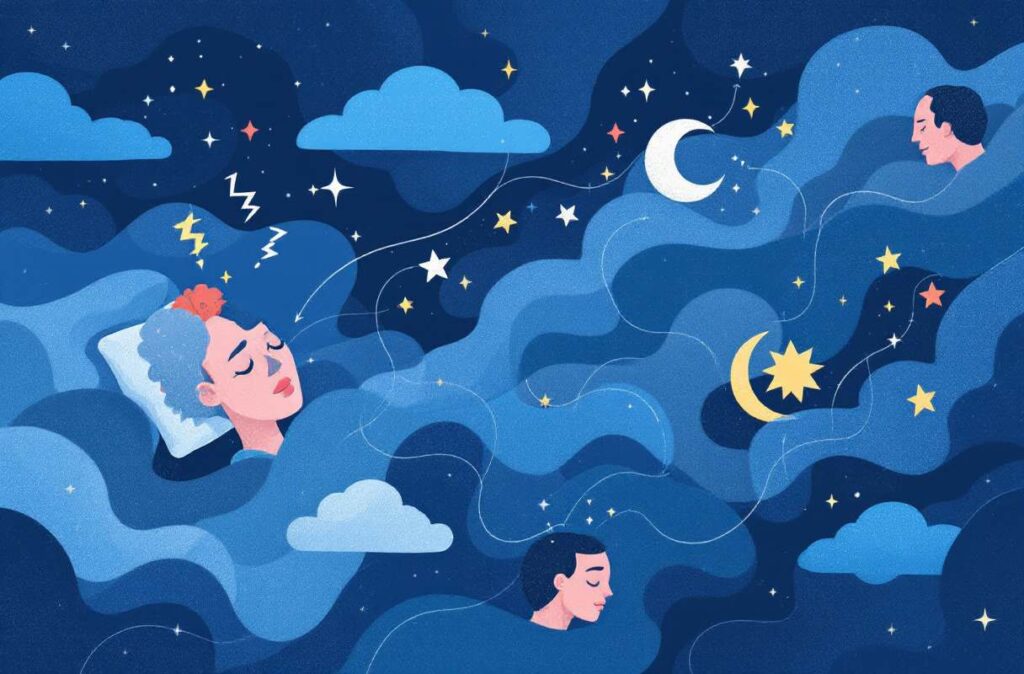
Comparison with Sleep Medications
Popping sleep meds can give rapid relief but comes with its own caution tape. Here’s a head-to-head of CBT-I vs. sleep meds on several points.
| Criteria | CBT-I | Sleep Medications |
|---|---|---|
| Long-term effectiveness | Pretty high | Not so hot |
| Risk of dependency | Zip | Big swing potential |
| Side effects | Nada | Usual suspects like foggy head, spins |
| Speed of results | Slow and steady | Quick as a flash |
| Cost | Kind on the wallet | Can add up over time |
Sleep meds might be the ticket for those needing sleep fixes pronto, but the catch is that they might lead to relying too much and annoying side effects.
For those curious about other sleep-friendly options, consider stuff like exercise for insomnia or chill-out tricks like meditation for sleep.
CBT-I aims to build lasting habits for better zzz’s over time. Plus, sizing up one’s sleep behavior, including scenarios like insomnia vs anxiety, might steer folks towards the best game plan.
Real-life Experiences with CBT-I
Getting a peek into the lives of folks who’ve actually tried Cognitive Behavioral Therapy for Insomnia (CBT-I) can be encouraging, especially for those battling sleepless nights. By listening to real people who’ve used CBT-I, you may get a sense of whether this approach might just do the trick for you.
Testimonials from People Using CBT-I
We’ve heard from a bunch of people who’ve grapefruited with CBT-I, facing ups and downs along the way. Here’s a quick rundown of what they’ve had to say:
| User Profile | Testimonial Highlights |
|---|---|
| Chronic Insomnia Sufferer | “Nothing seemed to work after countless meds. CBT-I taught me a lot about my sleep habits, and I finally got my sleep back on track.” |
| New Parent | “Being a new mom robbed me of sleep. Thanks to CBT-I, I set up a sleep routine and felt way more rested and lively.” |
| Shift Worker | “Night shifts wrecked my sleep. With CBT-I, I learned to balance my sleep schedule, and it’s made a world of difference.” |
| Anxiety-related Insomnia | “Anxiety was a sleep killer for me. CBT-I helped me push negative thoughts into the closet, letting me unwind at bedtime.” |
| Older Adult | “Aging messed with my sleep. CBT-I showed me the right techniques to follow, letting me enjoy my nights again.” |
| Medications Affecting Sleep | “Drug side effects kept me tossing and turning. CBT-I came to the rescue with ways to deal, and now I sleep soundly.” |
Real Success Stories
Beyond the testimonials, folks have spilled the beans on how CBT-I made a real difference for them. These stories show therapy’s power to shake things up:
- Laura, a New Parent: Endless nights without sleep got old fast for Laura. A CBT-I program clicked for her. By setting up a solid sleep routine and relaxing before bed, she cracked her rough sleep habits. In just a few weeks, she was dozing off quicker and hitting the hay more refreshed.
- Mark, a Shift Worker: Wild work hours had Mark dragging. With CBT-I’s sleep restriction therapy, he shaped up his bedtime routines. Sticking to his schedule like glue helped him catch better Z’s.
- Helen, Coping with Anxiety: Sleep and anxiety were old frenemies for Helen. With cognitive therapy, she knocked out her negative thinking and crafted a soothing night routine. Over time, she cut down on sleepless nights and felt more at peace.
- George, an Older Adult: At 65, George’s sleep started going a little haywire. CBT-I helped him tidy up his sleep hygiene. Tossing in some meditation worked wonders, helping him fall asleep and stay in dreamland.
These tales give a glimpse into the diverse journeys with insomnia and how CBT-I can be a game-changer. It’s a solid go-to for plenty of folks struggling with shut-eye problems. For more tips on catching better z’s, don’t miss our guides on sleep hygiene checklist and meditation for sleep.
Conclusion
Understanding insomnia isn’t just about identifying a problem – it’s about taking the first step toward better sleep and improved well-being. From recognizing its various forms and causes to exploring evidence-based treatments like CBT-I, knowledge is your ally in the battle against sleepless nights. Remember, insomnia isn’t a life sentence; it’s a challenge that can be overcome with the right approach and support. Whether through lifestyle changes, therapeutic interventions, or a combination of strategies, the path to restful sleep exists. Your journey to better nights and brighter mornings starts with understanding, continues with action, and leads to the peaceful sleep you deserve.
FAQs
What’s the difference between occasional and chronic insomnia?
Occasional insomnia lasts a few days to weeks, often triggered by stress or life changes. Chronic insomnia occurs at least three nights weekly for three months or more.
Can insomnia go away on its own?
Short-term insomnia often resolves naturally, especially if triggered by temporary stress. However, chronic insomnia typically requires intervention and lifestyle changes.
Is CBT-I more effective than sleep medication?
Studies show CBT-I provides longer-lasting benefits without side effects. While medications offer quick relief, CBT-I addresses root causes and teaches lasting sleep skills.
How long does it take for CBT-I to work?
Most people see improvements within 4-8 weeks of consistent CBT-I practice. Some notice changes sooner, particularly in sleep quality and falling asleep.
Can lifestyle changes alone cure insomnia?
While good sleep hygiene is important, chronic insomnia often requires a comprehensive approach. Combining lifestyle changes with treatments like CBT-I typically yields best results.
Resources
- Sleep Foundation: “Understanding Insomnia”
https://www.sleepfoundation.org/insomnia - Mayo Clinic: “Insomnia Treatment”
https://www.mayoclinic.org/diseases-conditions/insomnia/diagnosis-treatment/drc-20355173 - American Academy of Sleep Medicine: “CBT for Insomnia”
https://sleepeducation.org/treatment/cognitive-behavioral-therapy/ - National Sleep Foundation: “Insomnia & CBT-I”
https://www.sleepfoundation.org/insomnia/treatment/cognitive-behavioral-therapy-insomnia

